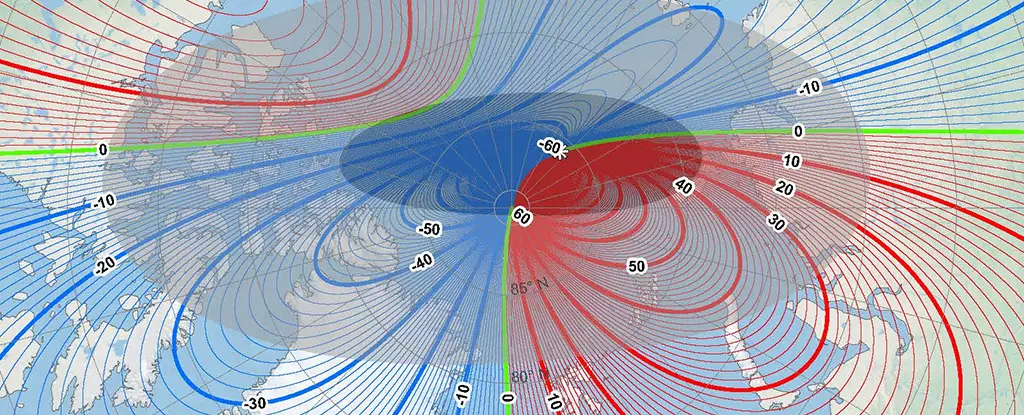As the holiday season draws near, navigation systems across various modes of transportation—be it ships, airplanes, or even the iconic sleigh of Santa Claus—find themselves at a critical juncture. The magnetic North Pole, a point of paramount importance for navigators worldwide, is officially undergoing a significant recalibration. This adjustment is necessitated by its continuous movement from Canada toward Siberia, a phenomenon meticulously monitored by experts from the US National Oceanic and Atmospheric Administration (NOAA) and the British Geological Survey (BGS). These organizations collaborate every five years to update the World Magnetic Model (WMM), which serves as the foundation for accurate navigation and mapping.
It’s essential to recognize that while the geographical North Pole remains stationary at the Earth’s rotational axis, the magnetic North Pole is inherently fluid. This is due to the dynamic nature of the Earth’s magnetic field, which is influenced by the shifting of molten iron and nickel within the Earth’s core. As this internal movement occurs, both the North and South Poles are in a constant state of flux, thus impacting how navigational instruments function. Compasses and GPS systems rely on these magnetic points to provide accurate directional guidance. Understanding the intricacies of these shifts is vital for ensuring the efficacy of navigation across various fields.
A Historical Context
Historically, the behavior of the magnetic North Pole has been relatively predictable, slowly encircling Canada since the 1500s. However, in the past two decades, it has exhibited unprecedented acceleration towards Siberia. According to William Brown, a global geomagnetic field modeler at BGS, the speed of this movement increased significantly each year until it reached a peak of 50 kilometers (31 miles) per year. This unexpected deceleration five years ago marked a intriguing shift in patterns previously documented, as the movement slowed to about 35 kilometers (22 miles) per year, representing an unprecedented change in the pole’s motion.
Scientific research points to the presence of two massive magnetic lobes situated beneath the Earth—one located under Canada and the other beneath Siberia. These lobes are believed to play a fundamental role in the changing behavior of the magnetic North Pole. In fact, there are occasions when the shifts are so pronounced that updates to the WMM are warranted outside the established five-year cycle.
The New Magnetic Model
Thanks to the latest collaboration between NOAA and BGS, we now have a newly updated World Magnetic Model, which promises to enhance navigational accuracy for the next five years. The latest model offers a higher spatial resolution, boasting ten times more detail than its predecessor—300 kilometers at the equator compared to the earlier model’s 3,300 kilometers resolution. Such precision is critical for industries reliant on accurate navigation, such as mapping, logistics, and even in military applications.
To illustrate the significance of these changes, consider this: if one were to take a direct flight from South Africa to the UK, relying on the obsolete WMM could leave them off course by a staggering 150 kilometers (93 miles). This stark difference showcases the impact of acquiring real-time and precise magnetic updates, which are vital for professional and personal navigation alike.
One of the remarkable features of modern technology is its ability to self-update. As navigation and mapping companies, along with government agencies, implement these new models, users of smartphones and navigation systems can breathe easy, knowing that their devices will automatically incorporate the latest magnetic updates. This seamless capability ensures that everyone, from commercial pilots to casual users, can rely on accurate navigation without needing to remember to make manual adjustments.
Looking Ahead
The implications of the magnetic North Pole’s movement extend beyond mere navigation; they resonate with humanity’s broader relationship with Earth and its mysteries. As science progresses, understanding the forces that govern these shifts could yield invaluable insights into the planet’s geology and help predict future changes. The latest advancements in magnetic mapping are not merely technical achievements; they represent humanity’s ongoing quest to master the intricacies of nature, ensuring safe and efficient navigation for generations to come.


Leave a Reply